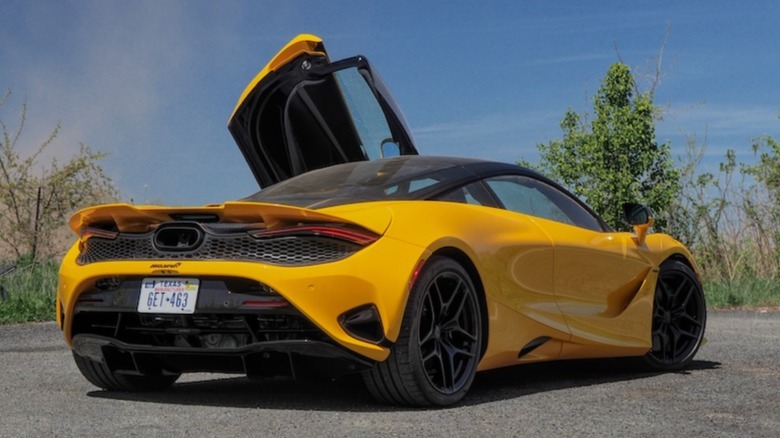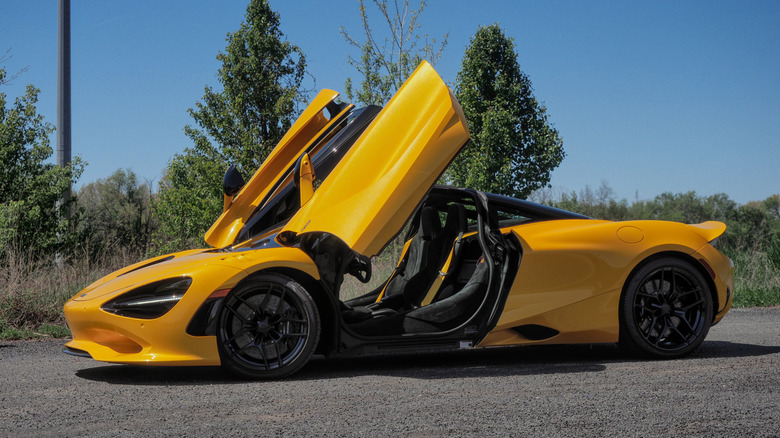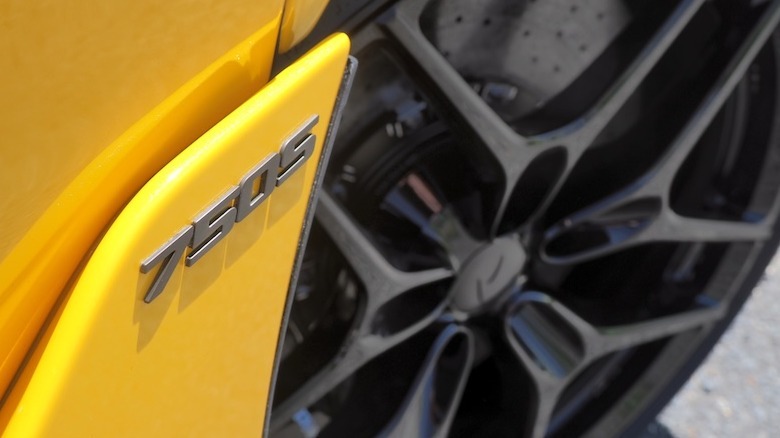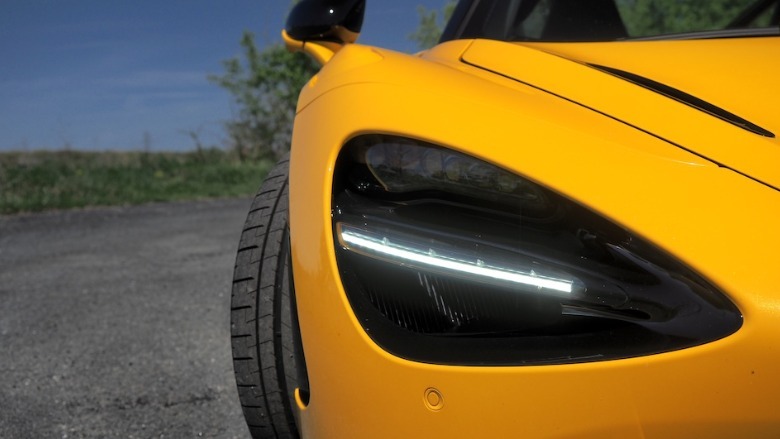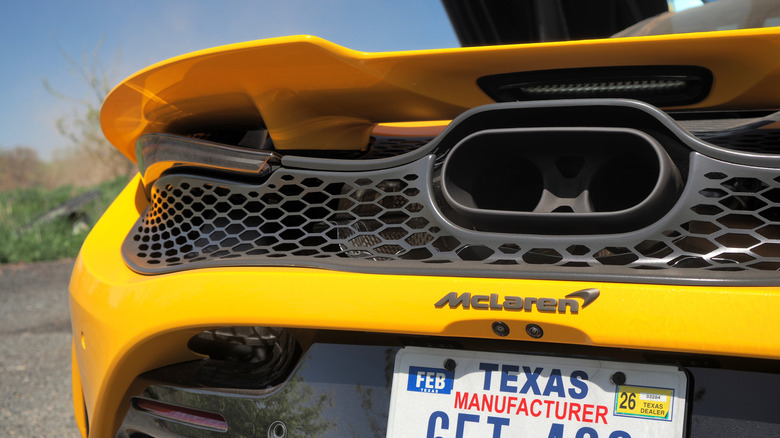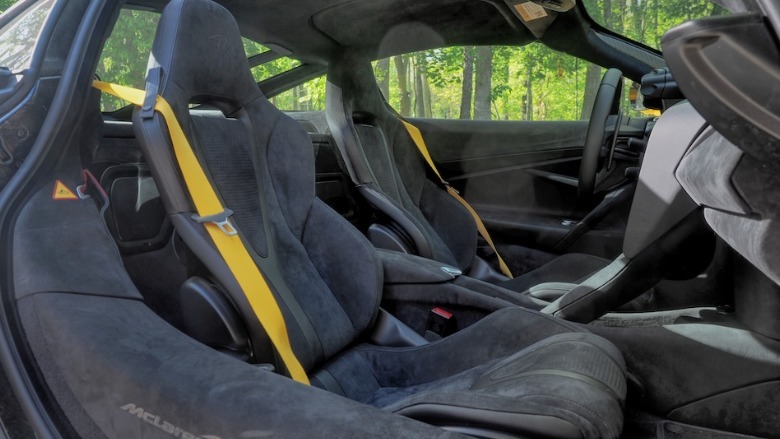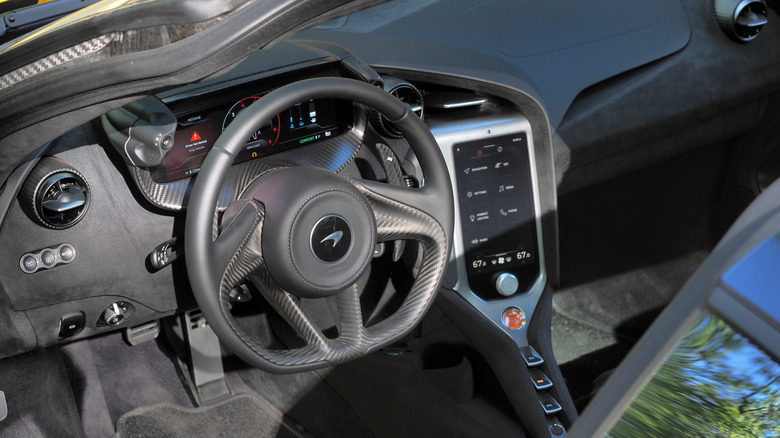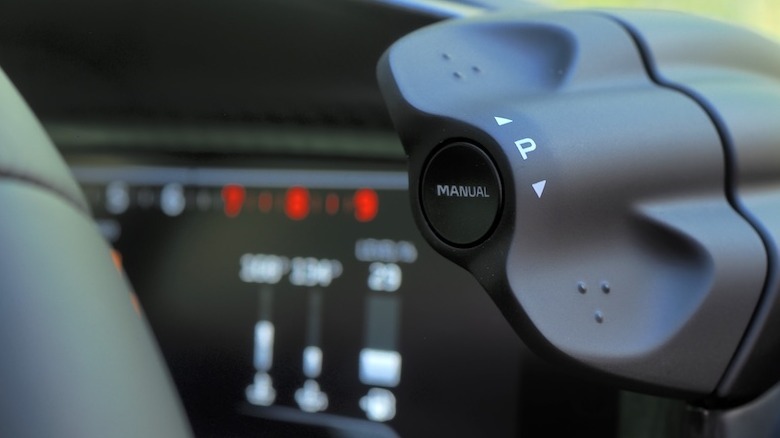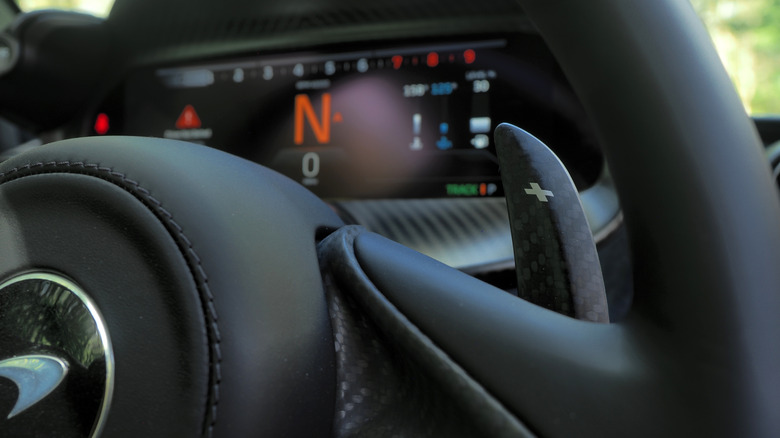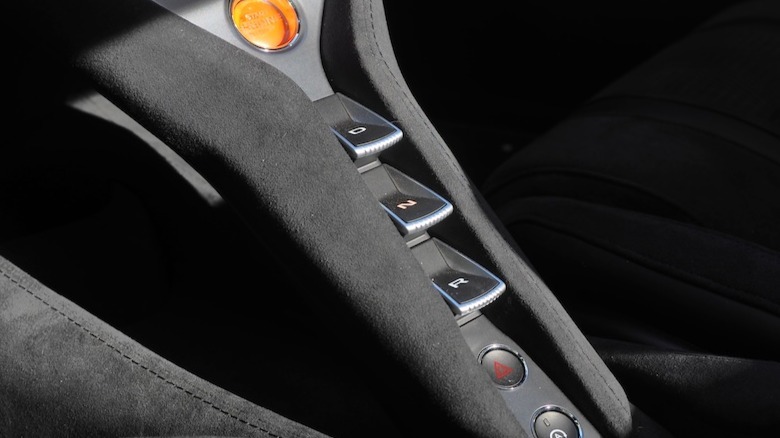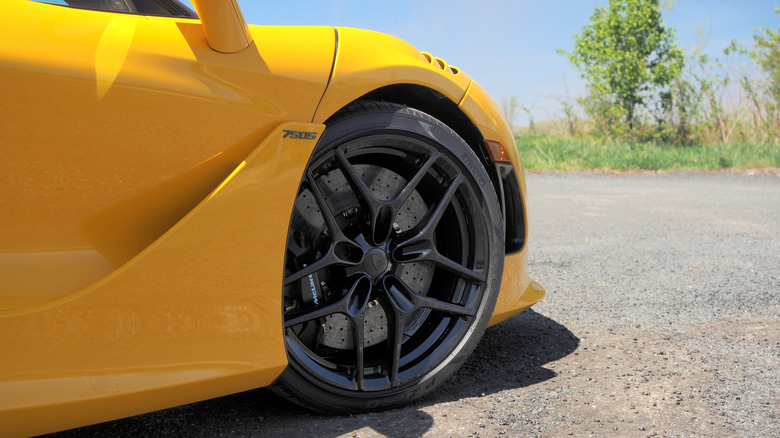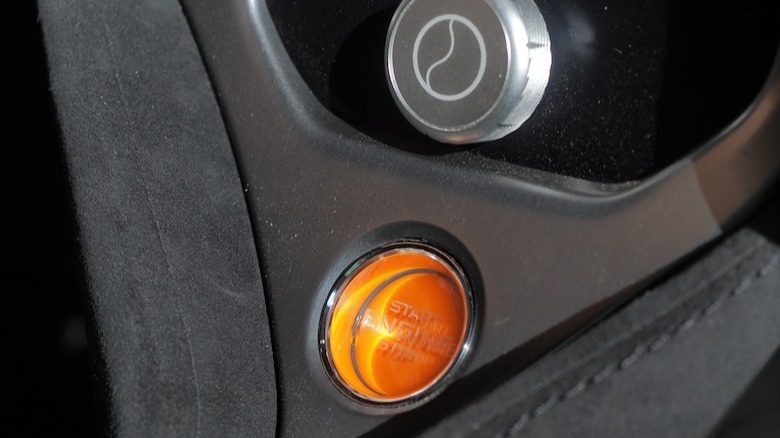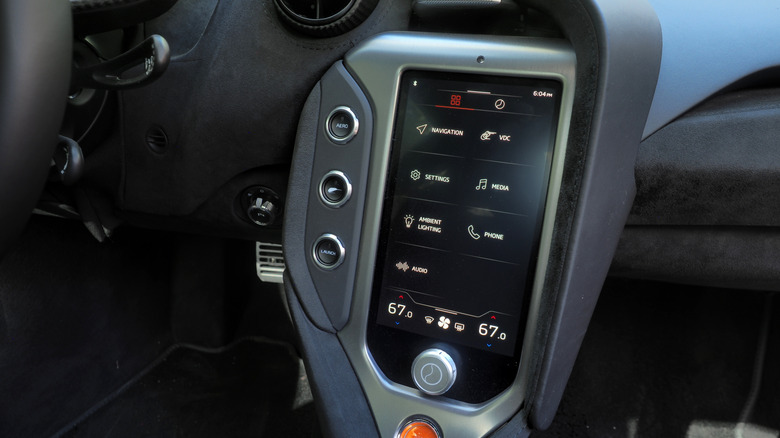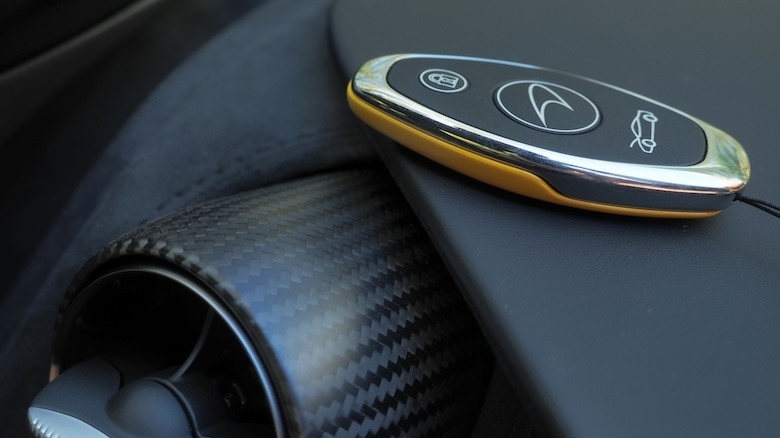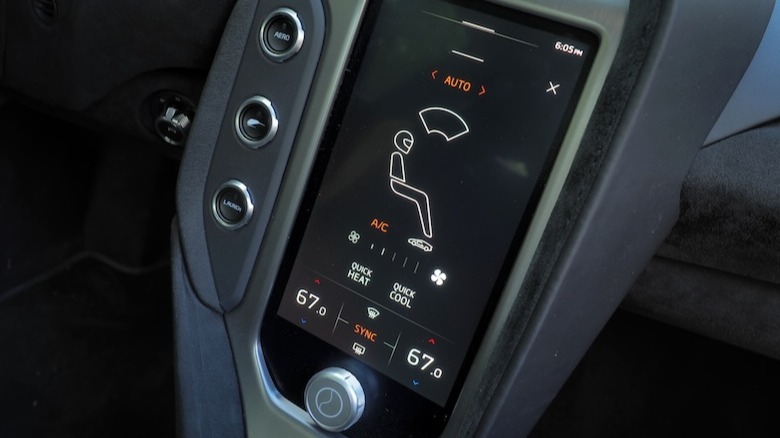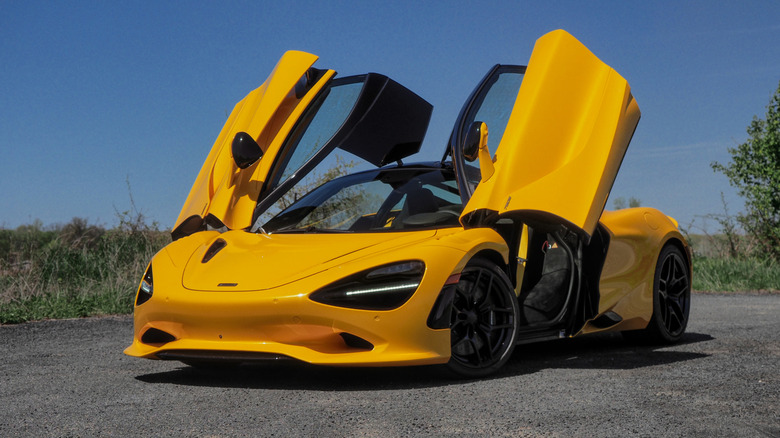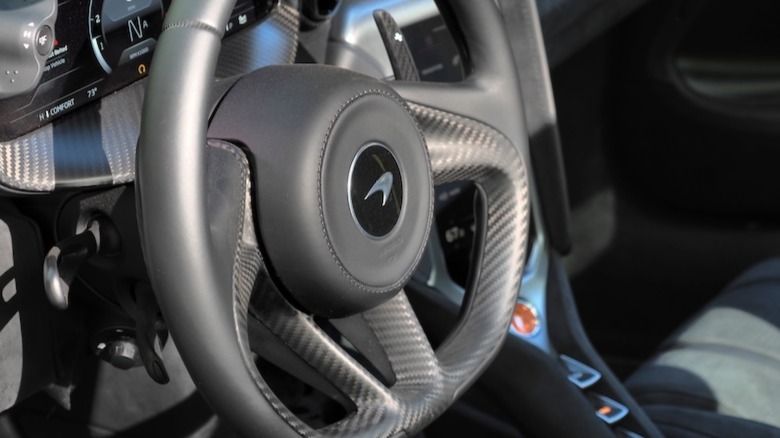2025 McLaren 750S Review: Faster, But That's Not The Point
In a parallel universe, I am the perfect buyer for the McLaren 750S. Sailing into middle-age, free from expensive children, suitably geeky, and enamored of silly, speedy things: all possible prerequisites to come knocking at the British automaker's door.
I'd probably already have an EV in the garage — something fast and with sober prestige; a Porsche Taycan perhaps, or an Audi RS e-tron GT – and be thus liberated, both practically and (somewhat less convincingly) from an environmental-morality standpoint. "Oh no, it's a McLaren," I would say to those who asked at gas stations or in parking lots, smiling a little apologetically. "They're from England."
The only issue is, in this universe at least, I lack the $350,000 that McLaren expects for a 750S. Or, indeed, the $420,280 of this particular Volcanic Yellow example, swollen as it is with options and swathes of extra carbon fiber. Such is the price of driving at the cutting edge.
Evolutionary design that still turns heads
The 750S comes, as McLaren aficionados and supercar zealots already know, on the heels of the excellent 720S. You'll probably need to be a member of one of those two cohorts in order to spot the difference, too, at least if you're not within sight of the small model badge just behind the front wheels.
It's testament, then, to how futuristic — borderline otherworldly — the 750S' predecessor was, all the way back at its 2017 debut. The 750S looks like what you'd find if you dug electrodes into the brains of a group of car-obsessed kids and slurped out their mental vision of the ur-supercar. All swooping bodywork and exaggeration, and of course with pop-up doors.
That doesn't make it classically pretty, not in the way some supercars temper their viscerality with a nod to more palatable design. Things in McLaren's world are expected to do their job, first and foremost: the 750S' revised front and rear styling is all about aerodynamics and downforce; that its headlamp clusters double as cooling ducts is a matter of efficiency more than aesthetics. About 30% of the parts are new, compared to the 720S, the automaker says.
Still hugely powerful, still ridiculously swift
For all that focus, nods to practicality do still abound. The attention-grabbing doors — McLaren refers to its swing as "dihedral" — cut into the roof, and when open leave a surprisingly large gap for entry and exit (there's also a convertible "Spyder" version which, roof-down, should be even easier to drop inside). It's a two-seater, but an airy one. The whole steering wheel and driver display cluster power forward and back, a boon for ergonomics, while the side mirrors provide an unexpectedly solid view. Even the rear window is oddly expansive, and McLaren's handy nose-lift system (which raises the front of the supercar to avoid scrapes on steeper driveways) is triggered with a simple-to-find button.
Jab the starter button, though, and the sensible life is far from your mind. The 4.0-liter twin-turbocharged V8 just behind you donates not only its 750 PS (740 horsepower) to the car's name, but to the rear wheels via a 7-speed dual-clutch transmission. There's a whopping 590 lb-ft of torque, and no electrification in sight (you'll need a McLaren Artura if you want hybrid fun).
Top speed is 206 mph, and 0-60 mph arrives in a mere 2.7 seconds. Figure on just 7.2 seconds to get from 0-124 mph. Conversely, the standard carbon ceramic brakes — with six pistons at the front and four at the rear — promise to bring the 750S to a halt from 62 mph in 99 feet.
Oddly unthreatening (at first, anyway)
These are, clearly, ridiculous numbers. They're also a good part of the reason for the supercar's existence: the 720S, for all its polish, was starting to be shown up by newer, fractionally-swifter rivals.
Yet slip into the stiff but somehow not entirely uncomfortable sports seat, and the 750S doesn't feel like a barely-tamed rocket ship. With drivetrain and suspension set to their default Comfort modes (you adjust each independently, using easily-waggled rockers either side of the instrument cluster) the McLaren is firm, and weighty, but not really scary.
Sure, the steering heft never lets you forget this is a supercar, and the sound of road grit dashing against the underbody and wheel wells can drown out the audio system at lower speeds, but it's not intimidating like you'd predict it to be. The suspension has even been softened slightly, compared to the 720S. You still have to keep an eye out for potholes, lest you want the 750S to rattle and shake, but it's not a hard car to drive.
Rouse the beast, reap the rewards
The 750S is not a hard car to drive fast, either. Hit the gas pedal and, even in Comfort mode, you surge ahead with a pace that's shocking. Tapping through to Sport or Track mode just cranks up the decisiveness.
Nail the accelerator and the twin-turbo V8 howls, various vents around you audibly suck in air, and the 750S hurls itself ahead. The transmission's shifts — which you can overrule via the carbon fiber paddles — are spine-kick aggressive; the tailpipes' barking, growling whine sounds like a furiously screaming Decepticon. Stretches of road you started out thinking "okay, long enough, let's let it rip" at, suddenly become seriously truncated.
The brakes are, happily, body-wrenching in their effectiveness. The pedal is heavy, inviting a strong stomp. Only you may not need to kick quite as eagerly as you'd first guess, because the 750S' superpower is in the turns.
Gleeful in the bends
There's no all-wheel drive, here, just good engineering and big, sticky tires. The 750S clings to the bends jealously, communicative and reassuring as the predictability of its talents becomes more and more clear. Certainly, the back end can get squirrelly, but that's usually because you've been too eager with your right foot before letting the tires come up to temperature.
In Track mode the McLaren's systems set aside whimsy, focusing instead on nailing superlatives. It's the availability of suitable asphalt, not the car, which is the limiting factor here. That's not atypical for high-horsepower models, of course, but the 750S' blistering acceleration forces you to package your fun in relatively brief blasts. Morally, legally, or just because of other road users, the supercar constraints of life off the track recur with frustrating frequency.
The 750S clear distinction between the modes for the handling, the drivetrain, and the various traction control and other electronic systems help make the most of what's on offer, though. Cranking the engine and transmission up to Track, while leaving the suspension in a softer mode, unlocked some backroad fun on less-than-ideal surfaces. And don't get me wrong, surging along straights, zooming through bends, and then relying on McLaren's excellent brakes is no hardship.
Nobody's perfect
Idly, and ridiculously, I begin to nickel-and-dime McLaren's build sheet. Could I do without the $5,400 Bowers & Wilkins audio system, or the $1,300 Stealth Badge Pack, or the $600 branded armrest? What about the $500 for a body-color-matching key fob? Dare I risk the potential key bowl embarrassment of mistaking another McLaren owner's ride for my own?
It is a foolhardy exercise, of course, as is pondering whether I could live with the 750S as a daily-driver. To salve my disappointment, there are certainly some annoyances in this six-figure plaything.
The 19 gallon tank isn't huge, and you can practically see its contents vanishing if you lean into the accelerator. The reversing camera beams its view to the instrument cluster, only to be blocked by the steering wheel if you need to turn while maneuvering; it was a roughly 50/50 toss-up whether the $4,800 360-degree camera's view would appear on the main infotainment display.
Speaking of that screen, McLaren's UI is charmingly minimal but also oddly confusing to use. I spent a lot of time navigating back to the home page — via the tactile metal control knob which, like all of the 750S' bespoke switchgear and cabin components, is glorious to both the hand and eye — and starting my endeavors from scratch. At least there's (wired) Apple CarPlay support, now.
2025 McLaren 750S verdict
I'll take head-scratching software as the main grumble in an otherwise outstanding sports car, though. And it's not like any of the many people who — wide eyed and smartphone cameras waving — rushed over to ask me about the 750S cared about reversing cameras (or color-matched key fobs, for that matter). Every trip in a McLaren is an invitation to discussion; it doesn't really need to be Volcano Yellow to puncture your bubble and let in conversation.
In his parallel universe, my doppelgänger pulls into his garage and plugs in his Taycan. Each time he feels a pang of guilt, at seeing the 750S parked there alongside: not driving it, this thing so resolutely constructed for the road, feels faintly blasphemous.
So far, so supercar. Only many of McLaren's changes with the 750S — while done, the automaker would no doubt insist, in the name of making it more aggressive and more rapid — have also made it just that tiny bit easier to live with day to day, compared to its predecessor. Perhaps unlocking more opportunities to embrace driving is the most ambitious thing any exotic can really do.

